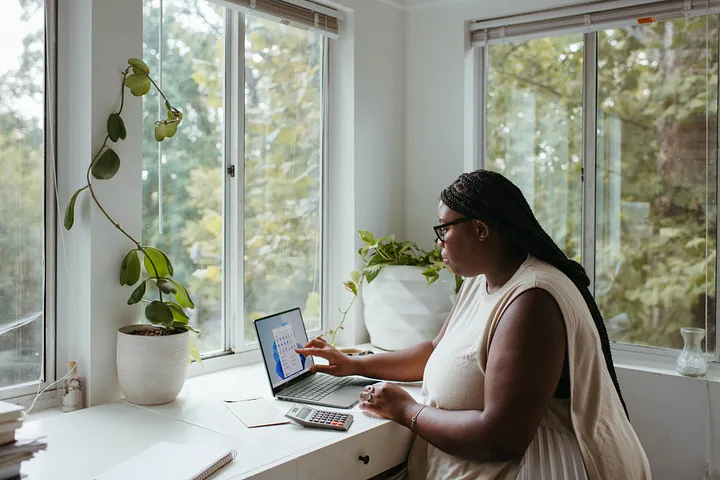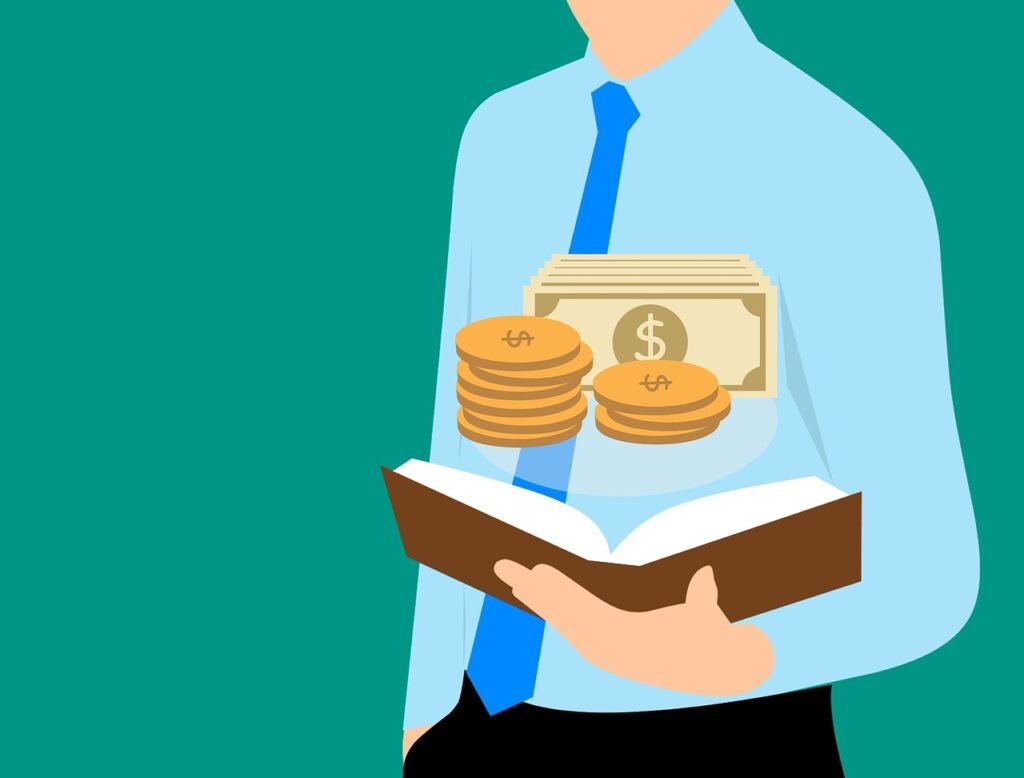The foreign exchange market, also referred to as forex or FX, is the global marketplace where currencies are traded.
It is the largest and most liquid financial market in the world. The forex market has a daily trading volume of around $7.5 Trillion dollars (as of April 2022).
Risk disclaimer: The details shared below is just to provide an understanding of the forex market. I have not placed any affiliations here or never will ask anyone to put money into something they don’t understand. I anticipate that this article will be of assistance to you in an academic context. Also, trading or speculating in forex and any securities is risky. So please stay educated before investing and be serious about the investments you perform.
I try to educate people on different financial topics. You can subscribe to follow.
Now before I dive into forex details, let’s read a little bit of the history of money, shall we? I will cover the examples with our specialized investor whose name is Lisa.Money, as we use it today, basically is a means of exchanging value.
From the beginning of time, people used to trade items for items, which was popularly known as a barter system.
An example of a barter system — If you were a pro at making sandwiches and Lisa was a coffee provider, you would trade the sandwich for a coffee (of equivalent value) from Lisa. Now, you can replace the sandwich and the coffee with any item you can think about and that exchange will basically constitute a trade.
Gradually, as society advanced, people moved on to trade with gold.
Gold, because of its physical metal nature, trading and dealing with it often took more effort and was expensive.
Some challenges with Gold –
- Physical Nature- Gold is a physical metal and trading is often harder as it takes effort and sometimes money to store and protect gold.
- Value changes- The value of gold can go up and down a lot, based on demand and supply. So it can be tricky for traders to predict it they will make a profit or not.
- Limited supply: There is only so much gold in this world. Thus the price of gold can swing when lots of people want to buy or sell it.
Thus to solve this problem, paper currency came into existence.
Paper currency (also called money or banknotes) is lightweight and easy to carry. It’s easily divisible into various denominations and accepted almost everywhere as a form of payment. Thus making it very convenient.
But people realized that it wasn’t an amazing store of value because of inflation.
Of course, nowadays people are debating if cryptocurrency or digital money is the next form of money. But that’s a discussion for another day.
Why forex exists and how forex is used globally:
Forex serves as a vital mechanism for conducting business and transactions between countries with different currencies
- Currency Conversion: People travel internationally for various reasons, and they need to convert their home currency into the local currency of the country they’re visiting. Forex allows individuals and travelers to buy and sell foreign currency, making it possible for them to engage in daily activities and transactions while abroad.
Example–
Lisa is traveling from the US to Europe today to give a business proposal. She has US dollars with her. But how is she going to spend her leisure time in Europe? To facilitate that, she will have to convert her dollars in Euro at the market rate (less some fees which the currency exchange counter will take). Again while traveling back to the US, she will have to convert the remaining Euros back to US dollars at the prevalent rate on that specific day.
- Governments use the forex market to implement policies. For example, while conducting business with another country, whether it’s borrowing money or lending money, or offering aid, a country needs to convert its currency to foreign currency.
- Businesses use the forex market to facilitate international trade. For example, if you are a citizen of the US and you are running a business overseas let’s say London, you would need to accept payments in British pounds and convert it to USD. As on 8th August 2023, 1 British pound is equivalent to 1.27 USD. So if you receive 1000 British pounds, you are basically getting $1,270 US dollars.
- Investors use the forex market to speculate on changes in currency prices. Currency prices change almost constantly during the week because the forex market is open continuously from Sunday at 4 pm US Central Time till Friday at 4 pm US Central Time. Markets are closed on Saturdays. So a market day can be counted from 4 pm central time of today till 4 pm central time tomorrow.
Why forex prices change?
Now that you have an idea of how forex is used, let’s take a look at why forex currency pairs change in price.
To explain this, I would like to use toys 🧸 as an example.
Imagine, Lisa has a special toy that she really likes, and other kids want to play with it too. Now, let’s say Lisa decides to trade that toy with another kid’s toy for a little while. When she trades, she might decide that her toy is worth more (remember, demand creates more value) than others’ toys because it’s really cool and lots of kids want to play with it.
Now, imagine countries as a big group of people who also have special toys called money. They trade their money with each other just like you traded your toy. But the value of their money can change because of many things that happen in the world that makes some countries’ money more special or valuable compared to others.
For example, if a country’s leaders make good economic decisions and its economy is getting stronger, more people might want to use their money, like lots of kids wanting Lisa’s special toy. This can make the value of their money go up 📈 . On the other hand, if something goes wrong or people lose confidence in a country’s money, its value might go down 📉, just like if your toy became less popular.
So, forex prices change because the value of one country’s money compared to another country’s money can go up or down based on what’s happening in the world, just like how the value of your special toy can change depending on what other kids think about it.
Lets go over some basics of how trading forex works:
When you are trading forex, you are basically trading two currencies against each other. This is known as a currency pair. The quote for any currency pair is to read the pair from left to right.
Let’s look at an example using EUR/USD currency pair.
If EUR/USD is trading at 1.20, it means that one euro is equal to $1.20 USD.
Another one — If USD/CAD pair is trading at 1.34, it means you can exchange one US dollar for 1.34 Canadian Dollars.
How traders benefit:
You can think and relate a currency pair just like a stock or commodity. Just like trading stock(or commodity), investors profit when they buy and the price increases. Investors can also profit if they sell, or short, a currency pair and the price decreases.
Let’s explain this with you know what — EXAMPLES 🙂
Suppose, our investor, Lisa thinks India’s economy is going to grow faster than the United States over next 5 years, and as a result she thinks the INR (Indian rupee/ currency) will strengthen against the US Dollar. She can buy the USD/INR pair to speculate on her assumption.
If the price of the currency pair rises, she will make money. 🙂
On the other side, if she is wrong and the price falls, Lisa will experience a loss. OOPS! ☹️
Let’s take a look at some key aspects of the forex market:
Margin
A loan(borrowed funds) from your brokerage firm (TD Ameritrade, Schwab, IBKR, etc.) is called a margin. When you use margin, you would need to put up only a percentage of the total investment to take a position. This amount is known as the margin requirement.
Forex margin requirements vary depending on the currency pairs and the size of a trade.
The margin requirement for most currency pairs averages around 3% to 5%, but it may vary between 2% — 20%.
Let’s look at margin requirements with an example of the EUR/USD pair.
Let’s say EUR/USD pair is trading at 1.20 and our investor Lisa wants to buy a standard lot or 100,000 units.
The total cost of trade would be $120,000 USD. That’s a lot of money 🤑🤑🤑
However, she doesn’t have to put in all of the money. Instead, she can just pay the margin requirement.
Let’s say the margin requirement was 3%.
So 3% of $120,000 = $3,600 — that’s the amount that Lisa needs in her Forex account to place this trade.
Please note, for major pairs like EURUSD or USDJPY, the margin requirements can be low e.g. 50:1 . This means for trading $50 of a currency you will only need $1 base currency.
In minor pairs like the Mexican peso, Singapore dollar, etc. the margin requirements can be 20:1, meaning an investor would need to put in more money to trade, i.e. margin requirements will be higher.
Lots
Currency pairs typically trade in specific quantities known as lots.
The most common lot sizes are standard and mini.
Standard lots represent 100,000 units and mini lots represent 10,000 units.
Some brokers also allow micro lots i.e. 1000 units or nano lots i.e. 100 units.
When trading currencies, an investor is dealing with PIPS.
A PIP is a percentage of a point or price interest point. Pips (standardized units) are used to quantify how much the exchange rate has moved, making it easier for traders to track price movements.
Here is an explanation with examples(again for Lisa):
Let’s say, Lisa is interested to trade EUR/USD pair.
If the EUR/USD exchange rate moves from 1.2000 to 1.2005, that’s a change of 5 pips. In this case, the fourth decimal place is the pip value.
The smallest price movement in the exchange rate is a pip.
Example 1:
Initial exchange rate: EUR/USD = 1.2000
New exchange rate: EUR/USD = 1.2005
Change in the exchange rate: 1.2005- 1.2000 = 0.0005 (5 pips)
Example 2:
For USD/JPY, one pip extends to the second decimal ie. a change in 0.10 in the currency pair means 1 pip change.
Initial exchange rate: USD/JPY = 109.50
New exchange rate: USD/JPY = 109.60
Change in the exchange rate: 109.60- 109.50 = 0.10 (10 pips)
What is the profit for each pip movement?
While trading standard lot for EUR/USD, each pip movement is typically worth $10.
For mini lot trading for the same currency pair, each pip is worth $1.
For micro lot — Each pip is worth $0.10
Please note, that the value of pip depends on the size of the trade (lot size) and currency pair.
That’s all about forex trading basics.


